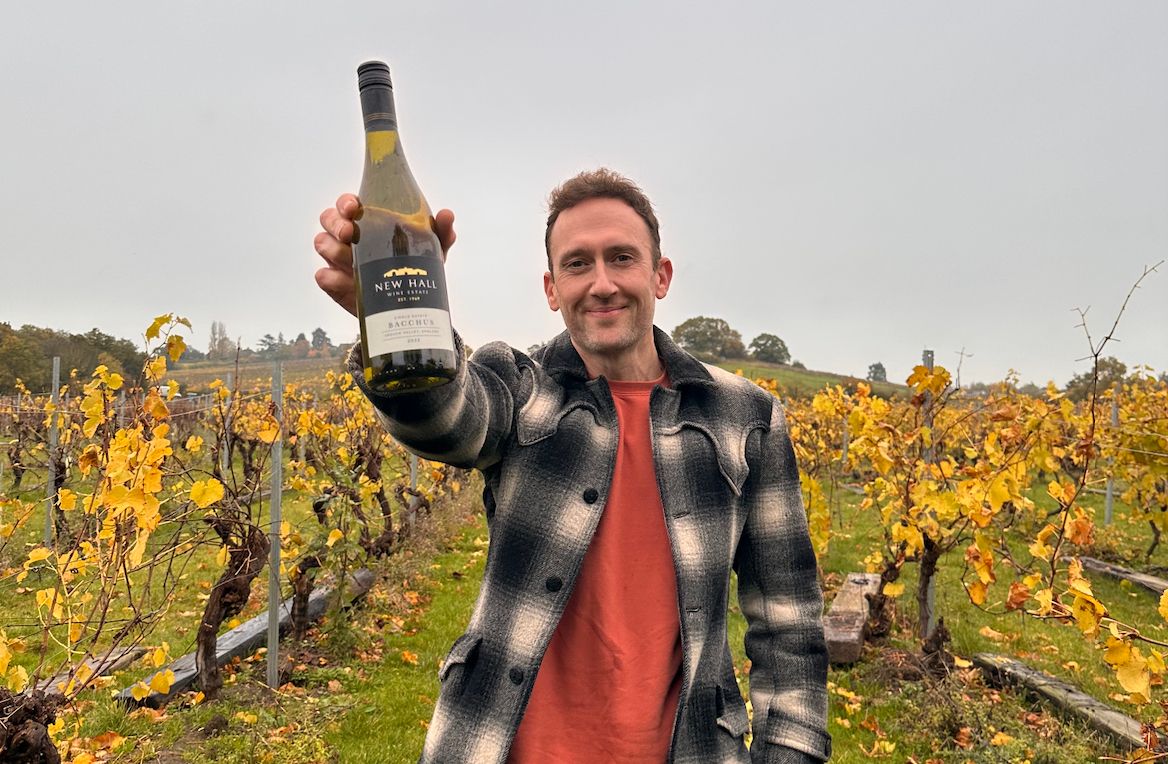Ask a growing number of English winemakers what is the secret of their success and many will point to Essex and the quality of grapes that are now being used in many of the country’s most revered wines, as Marasby’s Simon Huntington explains.
Hemmingway once wrote that things happen in two ways: gradually, then suddenly.
After years of gradually growing more and more of the fruit going into England’s highest-rated still wines, Essex is suddenly the English wine region on everyone’s lips.
Take the article by Alice Lascelles published in the Financial Times a couple of weekends ago as an example: “The growing consensus is that ‘England’s Cote-d’Or’ is now producing some of its best still wines,” she writes.
Or a recent Pinot Noir tasting which took place at 67 Pall Mall, pitting English wines against Pinots from the rest of the world. Except that the English wines weren’t from Kent, Sussex, or any other of the more visited wine producing counties, but exclusively from Essex.
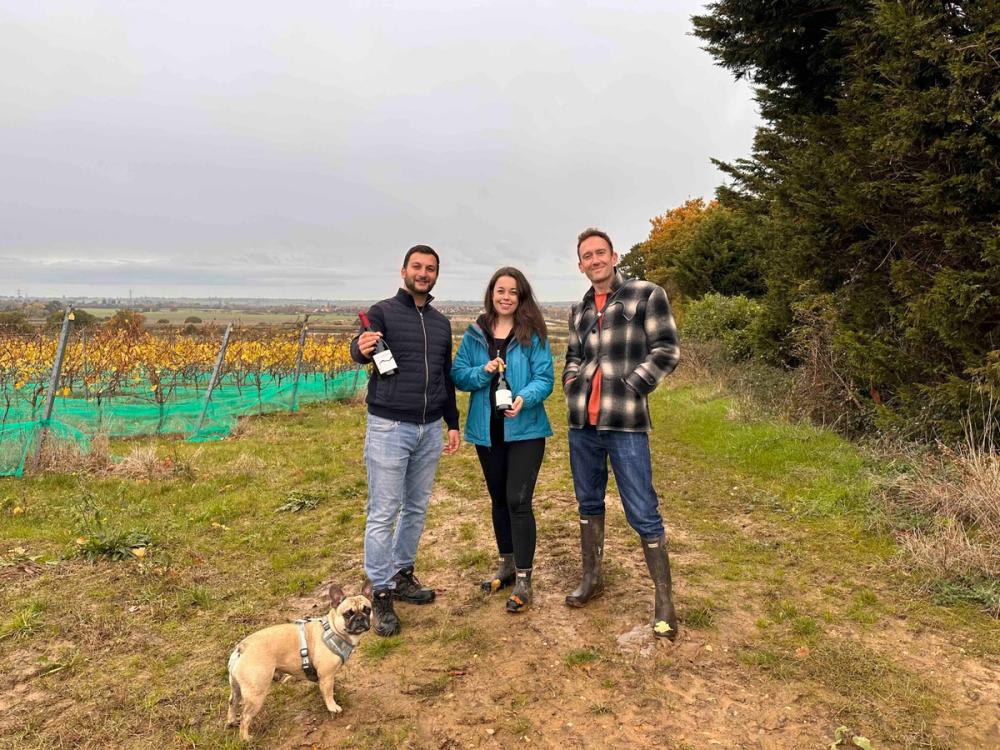
Umit and Katie Yesil of Riverview Crouch Valley are one of a number of new winemakers in Essex making quality wines
Or the view of the Essex growers: Umut Yesil is one of Crouch Valley’s youngest vineyard owners, with his Riverview Crouch Valley site conceived in 2016 and planted in 2018. “There wasn’t talk about Essex wine or Essex grapes at all when we first planted. Then the 2020 vintage happened, and it just blew up ever since. It feels like it happened over night.”
So why now? And why Essex in the first place? And can the region capitalise on this tornado of interest, turning it into long-term growth?
All about terroir
The obvious answer as to why everyone’s talking about Essex is its terroir. Taken in the widest sense of the concept, there is something special about Essex’s combination of climate and soil that makes a material difference to the quality of its fruit – particularly in the Crouch Valley.
Dale Symons was one of the first farmers to plant grapes in the Crouch Valley area, with the initial tranche of vines going into his Clayhill Vineyard site as far back as 2006. It’s an incredible spot – a dramatic south-facing slope whose bottom is just a few hundred metres from the banks of the river Crouch itself.

Dale Symons of Clayill Vineyard says the Essex climate is perfect for grape growing
“Every vineyard owner goes on about the microclimate of their own space,” he says. “But as a farmer, I’d sit here and watch weather fronts come in and split and the rains would miss us. It was terrible for growing beans, but the vines love it.”
“Warm, dry, low rainfall, low frost risk. We haven’t had frost since we planted 17 years ago,” he adds.
This anecdotal view of Essex’s favourable climate is backed up by scientific research conducted by Dr Alistair Nesbitt of Vinescapes, whose 2018 Suitability Model for Viticulture in England and Wales cites Essex’s high number of sunshine hours and low rainfall as significant factors in its potential.
Average rainfall in Essex is about half that of Sussex, and it’s particularly dry in September and October, which are crucial in England for achieving fully ripe grapes.
That’s the weather, but what about the soil? Isn’t the English wine story meant to be about our chalk? Yet there’s no chalky soil in Essex – the main soil type is clay, with a particularly dense and sticky type classified as London Clay found in the Crouch Valley.

Chris Wilson is proud to be sourcing grapes from Essex for his award winning range of Gutter & Stars wines
Winemaker Chris Wilson of Cambridge urban winery Gutter & Stars has a great view on Essex’s soil. Wilson’s still Pinot Noirs, which are made predominantly from fruit grown in Essex vineyards, are amongst Tamlyn Currin’s (wine critic for JancisRobinson.com) highest scoring of all English still wines.
“Lots of the growers in Essex call it ‘dirty old clay,’” he explains. “Before they got into grapes, these guys were growing wheat for centuries as families. They’ve been cursing the soil forever – it’s horrible, it’s difficult to work with, it sticks to everything – and suddenly it’s producing fantastic grapes. So, in some senses, the London Clay is more interesting than chalk, with properties for Pinot Noir certainly and other still wines.”
So, Essex has the weather, and it has the soil, and these can go a long way towards explaining why Essex’s fruit is so favoured for still wine production.
But the weather and the soil in Essex haven’t suddenly changed in the last couple of years. They might explain the why – but not the why now. They’re a gradual explanation, but not the sudden.
All about vintage
Talking of the last couple of years, perhaps it is England’s up and down vintage quality that provides the reason why it is suddenly now that everyone’s talking about Essex.
Umut Yesil of Riverview references the 2020 vintage as a turning point, but it is 2018 that is still regarded as the golden English vintage. 2019 followed as a bust for many. 2020 was indeed another glorious year, but followed in 2021 by another cool and wet summer. Then 2022 came up trumps once again.
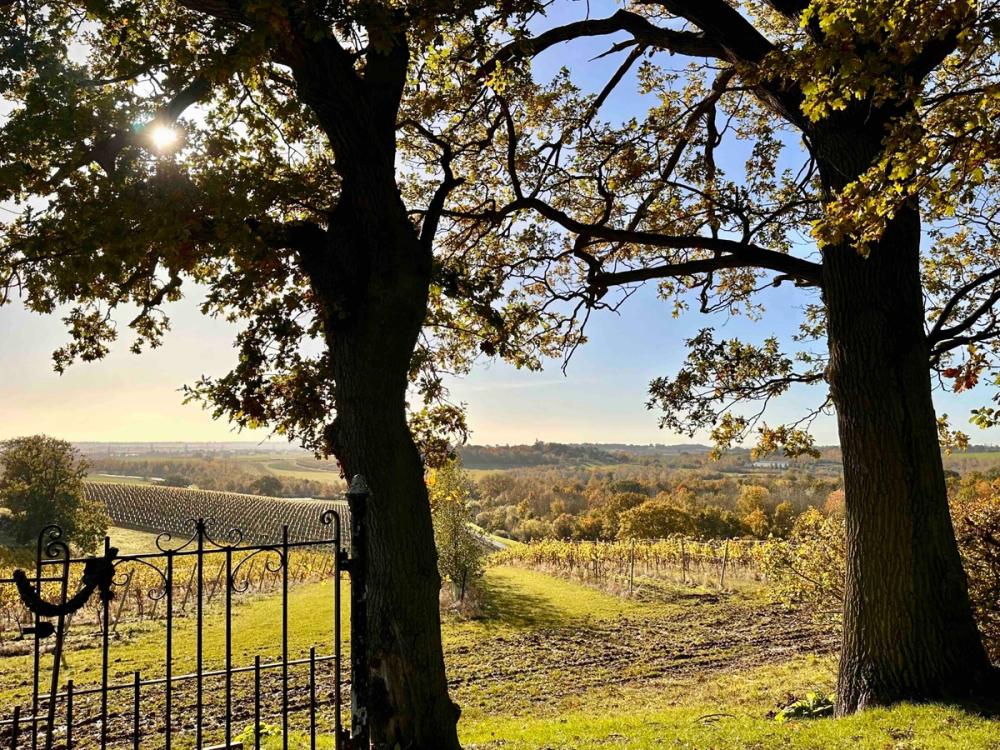
The vineyards at Missing Gate Vineyard
Nick Speakman of Missing Gate Vineyard regards this recent and dramatic vintage variation as a key competitive advantage for Essex. He tells us he loves the less-favoured English vintages, because he believes that this is when Essex truly shines.
“In easy years like 2018 and 2020, everyone’s producing great fruit,” he explains. “Tough vintages are great for Crouch Valley, because that’s when the grapes from this region really shine through.”
Yet Dale Symons of Clayhill takes a longer-term view. “I remember 2013 was a bumper crop. They couldn’t ripen it in Kent or Sussex, but we could here. Our grapes were going into the winery earlier and riper than anyone else.”
So, the recent run of variable vintages might have helped to further expose the more consistent quality of Essex’s fruit for still wines – but this again seems like a factor that explains Essex’s gradual success – not the sudden, seemingly overnight success that it is enjoying now.
All about exposure
Perhaps the explanation is that until the last couple of years, there just weren’t that many winemakers who were exploiting the full potential of Essex’s fruit.
Visit Crouch Valley even today, and it is stark just how few wholly estate-grown and made wines there are from the region. On our recent trip we counted just two – New Hall, which has been on the scene since 1969, but which has been known primarily as a grape supplier, and Clayhill, which makes so little wine that it is available direct to the consumer only in person at the cellar door.
Even now, the top-rated Essex wines tend to appear under other winemakers’ labels. Lyme Bay shouts loudly about its Essex-sourced fruit yet is based in Devon. Leading urban wineries Gutter & Stars and Blackbook Winery also proudly make a feature of their Essex grapes, but make their wines in Cambridge and London.
It has been brilliant for the reputation of Essex that these top winemakers are so keen to sing the praises of their Essex-grown fruit. Yet it is a further illustration of the fact that, until very recently, Essex has lacked many wines of equivalent quality made in the region.
It is here that the significant and sudden change has come about in the last few years. There are a much greater number of farmers who have diversified into growing grapes now that a critical mass has been reached.
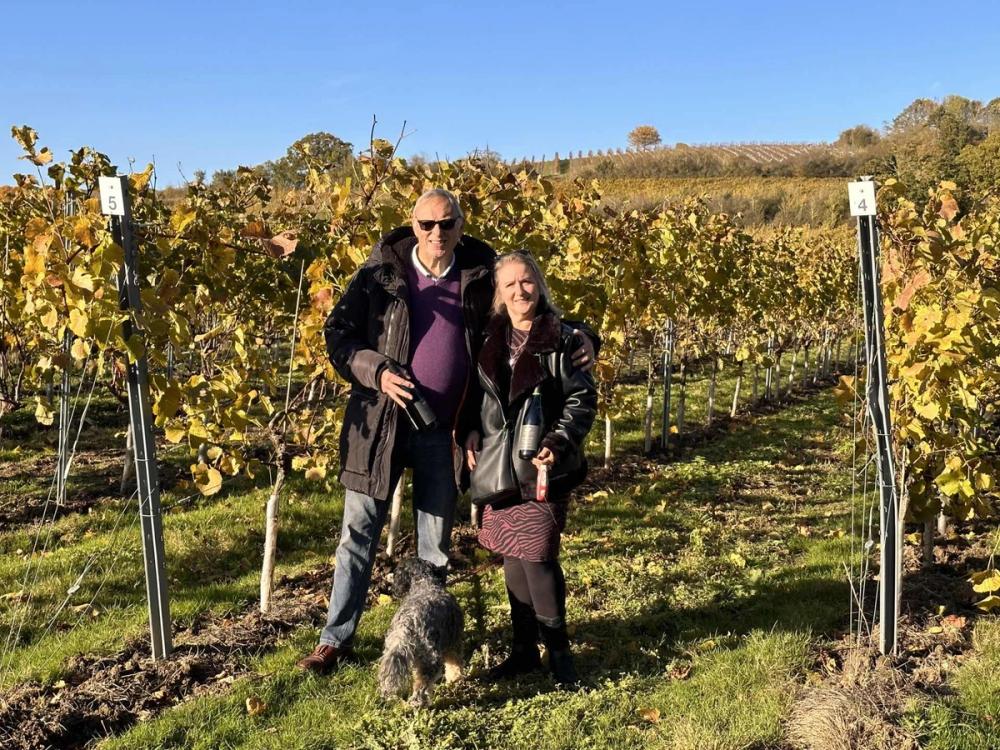
Graham and Caroline Martin of Martin’s Lane Vineyard says it has become more profitable for farmers to grow grapes instead of more traditional crops
“Existing farmers have decided it’s a lot more cost effective to plant vines,” Graham Martin of Martin’s Lane Vineyard explains. “You drive down the Lower Burnham Road now and you see vineyard after vineyard.”
Dale Symons concurs: “There were just three of us in 2006. Today in what we would call the Crouch Valley region, there are 24-25 vineyards.”
Many of these vineyards are starting to put serious muscle behind developing their own wine brands. Riverview Crouch Valley has been picked up by Matthew Jukes as producing one of his all-time- favourite English wines. Missing Gate was described by Tom Hewson as producing the best Pinot Blanc ever made in England.
And New Hall – the grandmother of the region, has transformed its output in recent years. “We’ve now got people doing what they should be doing,” says commercial manager Lucy Winward. “New press, new tanks, new lab. We’ve totally modernised in the last few years. We now have a proper professional business. It’s all about sustainability and longevity.”
So perhaps it is this – the sudden boom in the number of clearly signposted Essex-grown wines that has transformed the reputation of the region.
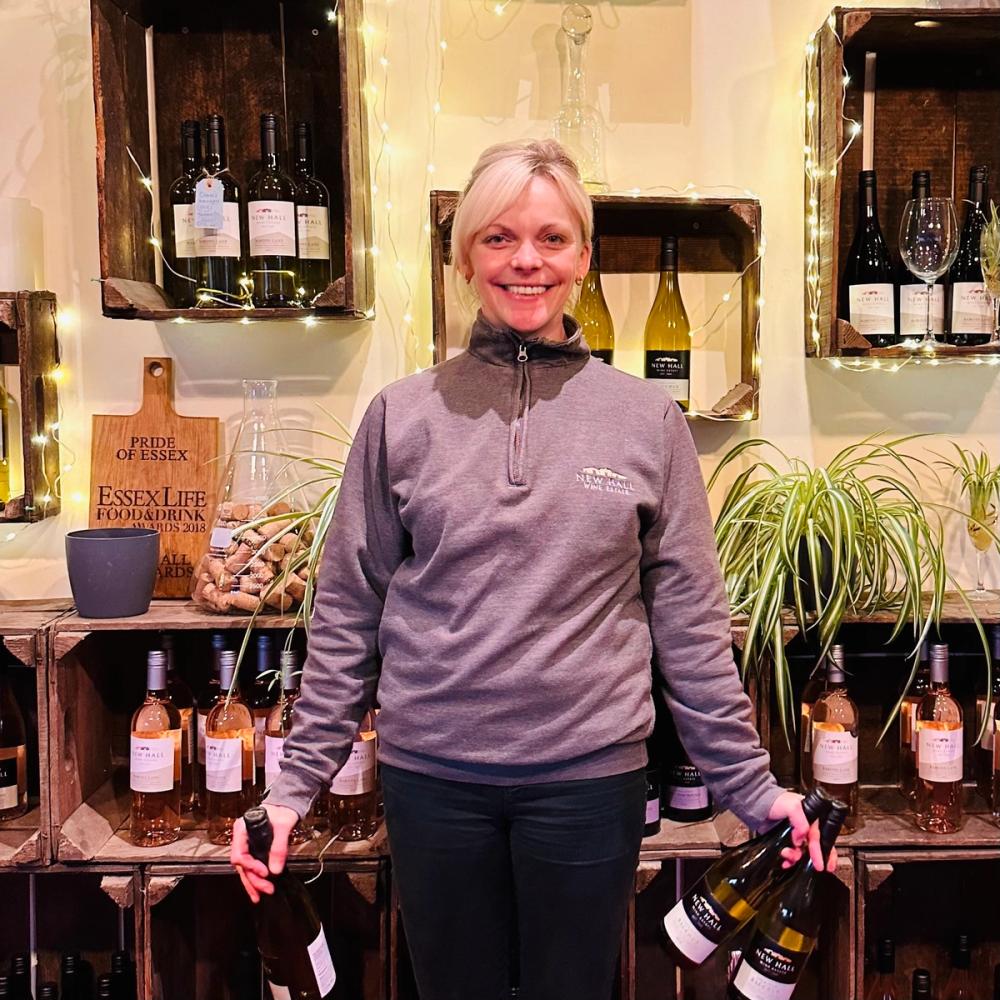
“We’ve now got people doing what they should be doing,” says commercial manager Lucy Winward at New Hall vineyard
Uncertainty
With so many highly rated wines now being made from fruit grown in Essex, the question is turning to how best to capitalise on Essex’s ‘sudden’ reputation.
A PDO for Crouch Valley is rumoured to be in the works, but if drawn too precisely, the boundary would exclude several of Essex’s highest-profile, and highest-quality producers. That could be as disastrous as drawing up a new quality-focused appellation in Bordeaux that excluded several of the first growths.
At the same time, other growers are looking at different ways to protect the Crouch Valley name.
“If it’s fruit from the Crouch Valley, it obviously has an implied value,” says Graham Martin of Martin’s Lane Vineyard. “We want a trademark for the region to help communicate the quality of our grapes.”
Either way, it will be hard to get everyone in Essex to agree a common approach. The New Zealand wine industry has had massive export success by pooling resources and telling a consistent story about quality and provenance. Yet, according to James Lambert of Lyme Bay winery, for this to happen in the UK we would need stronger leadership. “But I’m not sure where that’s going to come from,” he says.
While all this gradually shakes out, the best way to enjoy the sudden success of Essex is still to pay close attention to where an English wine’s grapes come from. Just because it’s made in Devon, or Surrey, or Kent doesn’t mean that it’s not an Essex-grown wine. Gevrey-Chambertin can be made elsewhere in Burgundy after all.
And while Essex is now suddenly famous for its wines, remember that it has gradually been working away in the background, building the quality of its vineyards for, in the case of New Hall, over 50 years.
- Simon Huntington is co-founder of Marasby, which helps people to discover the best English winemakers, and buy from them direct at vineyard gate prices. Visit Marasby.com and @marasbygb for more news and views.
